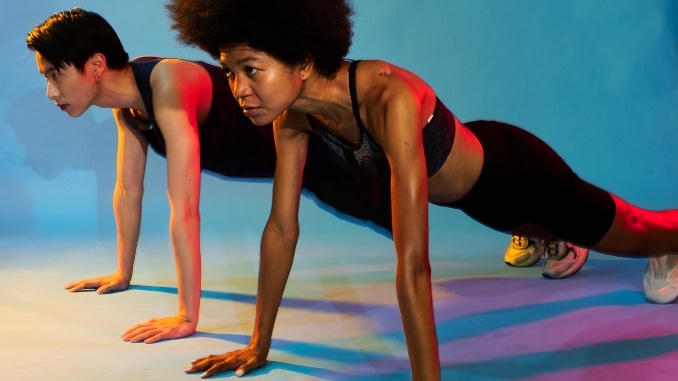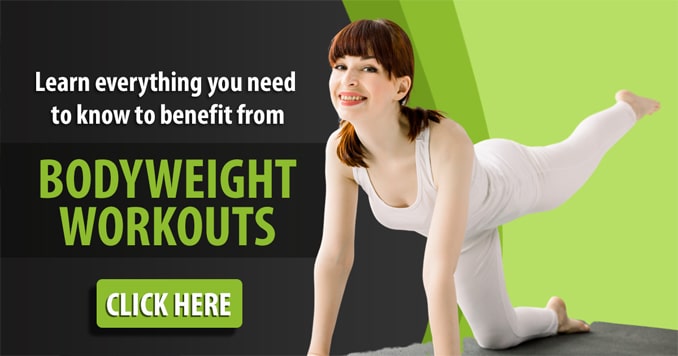Achieve easy fitness with a quick bodyweight workout requiring no gym equipment, just your body weight. Suitable for all fitness levels, these routines target specific muscle groups and enhance overall endurance. They offer variety and flexibility from full-body to abs, legs, and arms exercises.
Ideal for busy lifestyles, these workouts can be done anytime, anywhere. Strengthen muscles, improve flexibility, and promote fat burning with exercises like push-ups, squats, planks, and lunges. Say goodbye to pricey gym memberships and embrace effective, convenient bodyweight workouts for a transformed effortlessly fit body.
Importance of Bodyweight Workouts
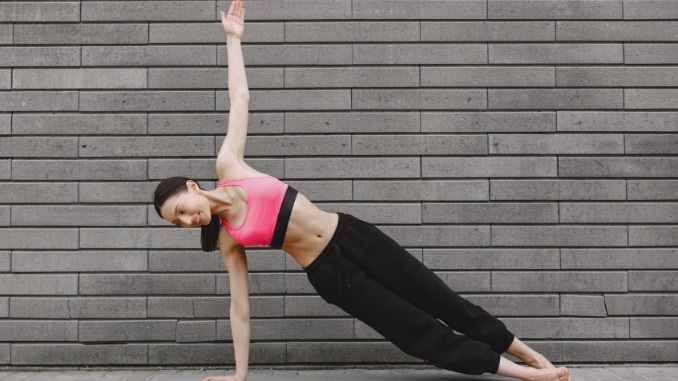
Bodyweight workouts have gained popularity recently due to their simplicity and effectiveness. They offer a convenient and accessible way to be fit without expensive gym equipment or memberships. The beauty of quick bodyweight workouts lies in the fact that they can be done anywhere, anytime, making them ideal for those with busy schedules or limited access to fitness facilities.
One of the critical advantages of bodyweight workouts is that they engage multiple muscle groups simultaneously. This helps build upper body strength and overall body strength, balance, and coordination. Additionally, bodyweight exercises promote functional fitness, which means they mimic movements we use in our everyday lives. This can lead to improved mobility and reduced risk of injury.
Benefits of Bodyweight Workouts

In addition to the convenience and accessibility they offer, quick bodyweight workout come with many benefits. First and foremost, they are highly effective for building strength and muscle tone. The resistance your body weight provides can be adjusted by modifying each exercise's intensity or range of motion. This makes bodyweight workouts suitable for all fitness levels, from beginners to advanced athletes.
Furthermore, bodyweight exercises promote fat-burning and weight loss. By engaging multiple muscle groups and elevating heart rate, these workouts help to increase metabolic rate and burn calories. This can lead to muscle gain, improved body composition, and a leaner physique. When combined with a healthy diet, bodyweight workouts can be a powerful tool for achieving weight loss goals.
Another advantage of bodyweight workouts is that they improve flexibility and mobility. Many bodyweight exercises, such as lunges and squats, require a full range of motion in the joints. Regular practice of these exercises can increase flexibility and reduce muscle tightness. Improved flexibility can enhance athletic performance and reduce the risk of injuries during other physical activities.
Bodyweight Workouts vs. Traditional Gym Workouts

While traditional gym workouts have benefits, bodyweight workouts offer unique advantages worth incorporating into your fitness routine. One significant difference between the two is the cost and accessibility. Gym memberships can be expensive; only some can access a gym facility.
Bodyweight workouts, on the other hand, require no equipment and can be done in the comfort of your own home or any open space. Another key difference is the versatility of bodyweight exercises. Traditional gym workouts often involve machines or weights, which limit the range of activities you can perform.
With bodyweight workouts, the possibilities are endless. Each bodyweight exercise has countless variations and progressions, allowing you to continually challenge yourself and prevent workout plateaus.
Additionally, bodyweight workouts tend to be more functional. They focus on movements that mimic everyday activities, such as pushing, pulling, squatting, and lunging. This practical approach to fitness translates into improved performance in daily tasks and sports and reduced risk of injuries.
How To Get Started with Bodyweight Workouts
Getting started with bodyweight workouts is easy and requires minimal equipment. You only need a comfortable workout mat, a water bottle, and a positive mindset. Here are some steps to help you begin your bodyweight training and fitness journey:
1. Assess your fitness level
Before commencing an exercise regimen, evaluating your fitness level is crucial. This assessment aids in identifying suitable exercises and making necessary modifications if required. Consulting a fitness professional is always a good idea if you're unsure.
2. Set realistic goals
Take time to think about what you want to achieve with your bodyweight workouts. Establishing specific and achievable objectives is crucial for maintaining motivation and monitoring progress, whether your focus is on enhancing strength, losing weight, or improving flexibility.
3. Warm-up and cool-down
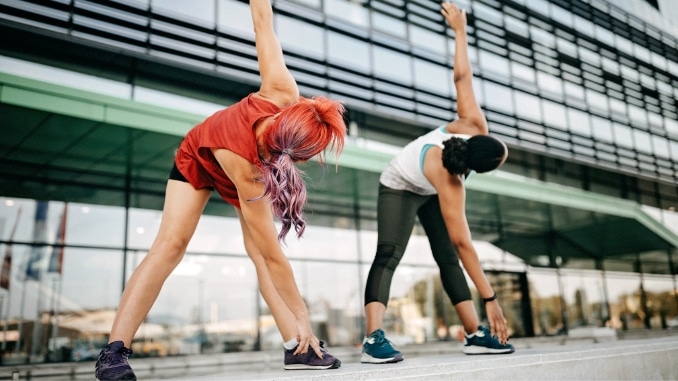
Like with any other workout, warming up and cooling down are essential for preventing injuries and promoting recovery. Take 5-10 minutes to engage in dynamic stretches and light cardio exercises before your workout to warm up your muscles. Afterward, incorporate static stretches to aid muscle recovery during your cool-down period.
4. Start with the basics
For beginners in bodyweight workouts, it's recommended to start with fundamental exercises and progressively advance to more complex movements.
5. Follow proper form and technique
Proper form is crucial for getting the most out of your bodyweight workouts and preventing injuries. Spend ample time mastering the proper technique for each exercise, and prioritize maintaining correct alignment throughout.
6. Listen to your body
How your body feels during and after each workout. If an exercise causes discomfort or pain, consider adjusting it or opting out entirely. It's important to listen to your body and not push beyond your limits.
7. Stay consistent
Consistency is key when seeing results with bodyweight workouts. Aim to exercise for a minimum of three to four times a week, and as you advance, progressively enhance your workout's length and intensity.
8. Stay hydrated and fuel your body

Remember to drink plenty of water before, during, and after your workouts to stay hydrated. Additionally, nourish your body with healthy foods to supply energy and nutrients for peak performance and efficient recovery.
Now that you have the basics down let's dive into 10 quick bodyweight workout routines to help you achieve your fitness goals.
Quick Bodyweight Workout Routines
Warm Up
1. Shoulder Roll
Begin in an upright standing position with your feet shoulder-width apart, maintaining good alignment with your head, shoulders, hips, and legs. Step your one foot forward and engage your core. Shift your shoulders forward, then roll them up and back until you feel resistance in your shoulder blades. Return to the starting position and then repeat the movement in the opposite direction. Complete for 10 repetitions in each direction.
In addition, to make the exercise more challenging, move your arms in circular motions.
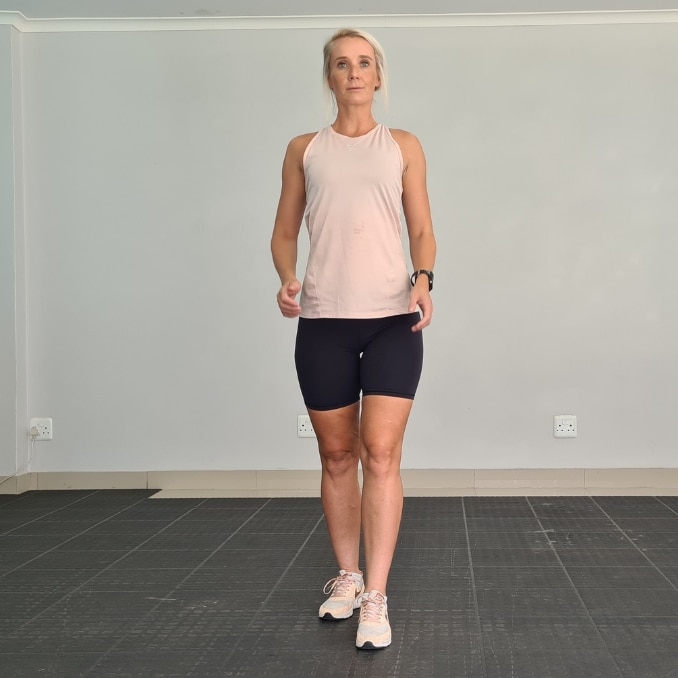 |
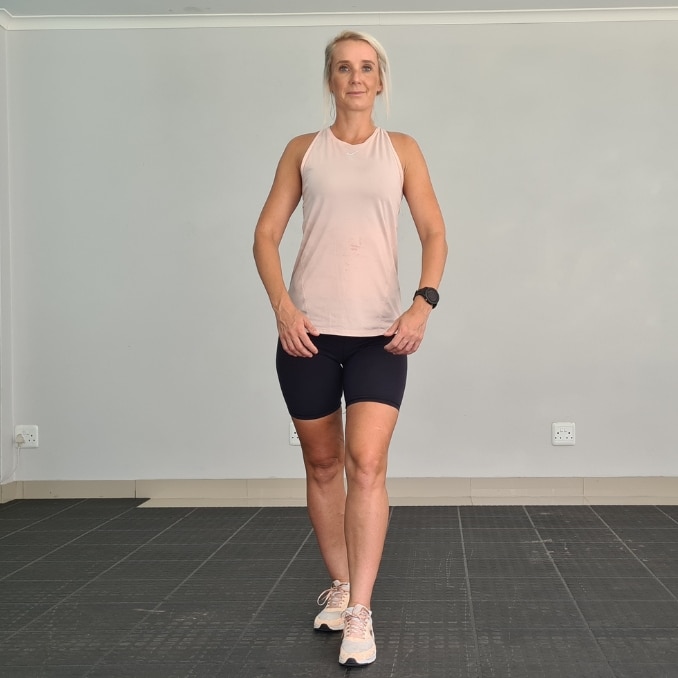 |
2. Arm Raises
Begin in an upright standing position with your feet shoulder-width apart, maintaining good alignment with your head, shoulders, hips, and legs. Step your one foot forward and place your arms at your sides. Engage your core and raise both arms overhead. Slowly lower your arms to return to the starting position and then repeat the movement. Complete for 10 repetitions.
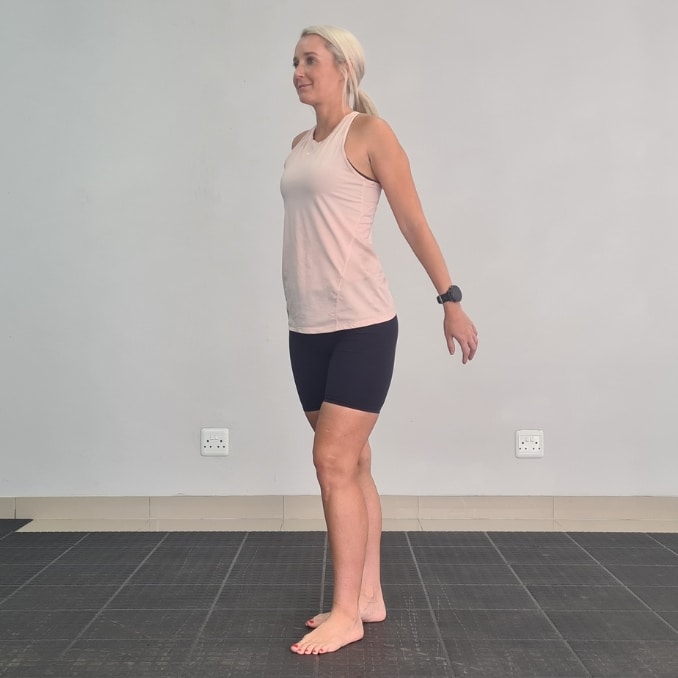 |
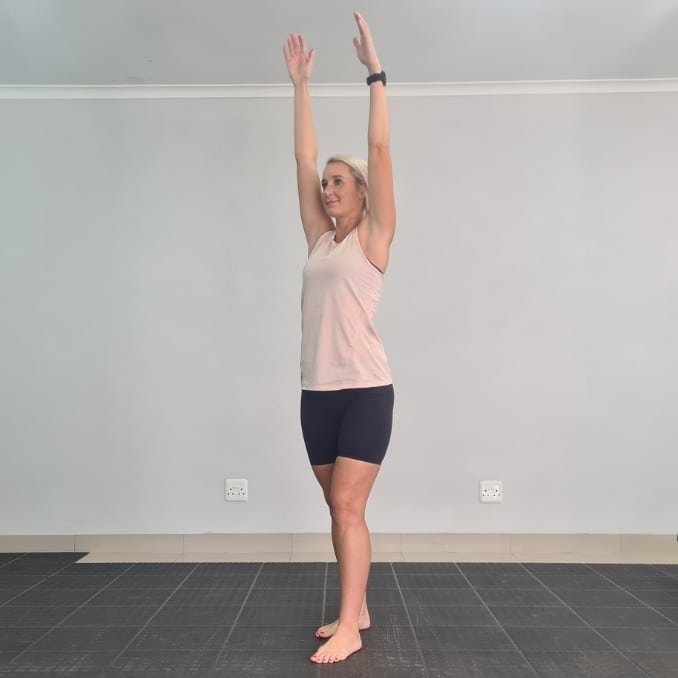 |
3. Shoulder Twist
Begin in an upright standing position with your feet shoulder-width apart, maintaining good alignment with your head, shoulders, hips, and legs. Place your hands on your shoulders. Engage your core and twist your upper body to one side, keeping your hips forward. Return to the starting position and repeat the movement on the opposite side. Complete for 10 repetitions.
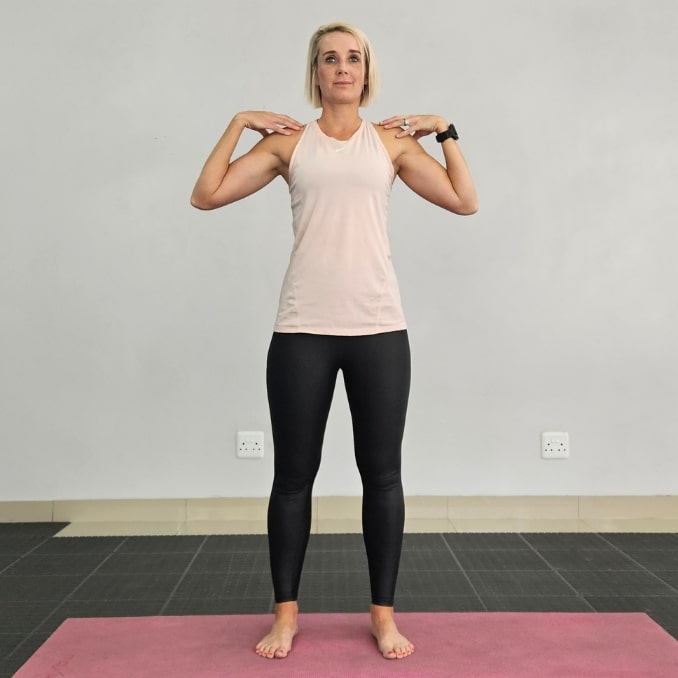 |
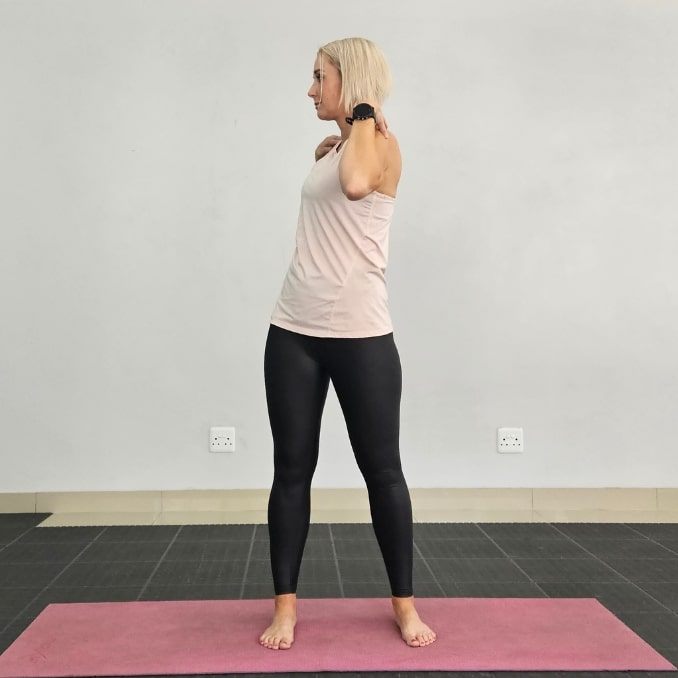 |
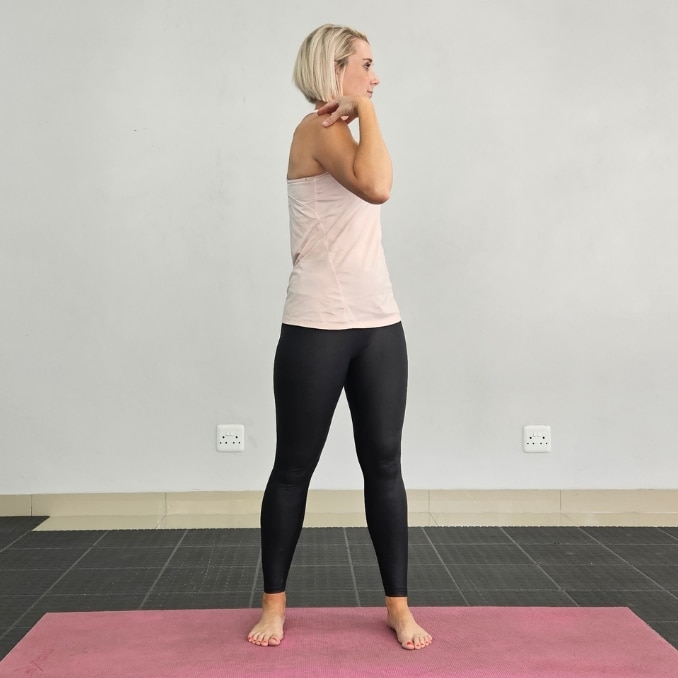 |
4. Standing Knee Lifts
For this quick bodyweight workout, begin in an upright standing position with your feet hip-width apart, maintaining good alignment with your head, shoulders, hips, and legs. Place your hands by your ears or interlace your fingers behind your head. Engage your core and drive one knee up towards your chest. Lower your leg back down to the starting position and then repeat the movement on the opposite side. Start with 3 sets of 10 repetitions on each side.
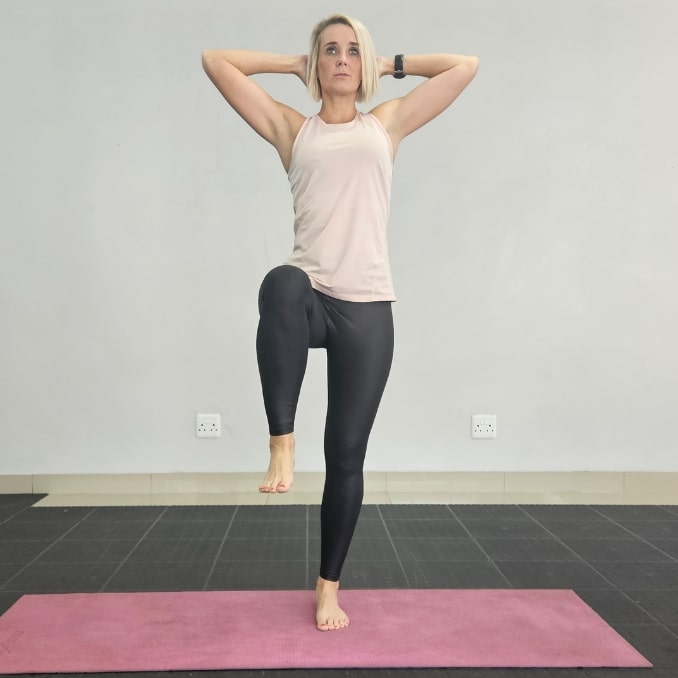 |
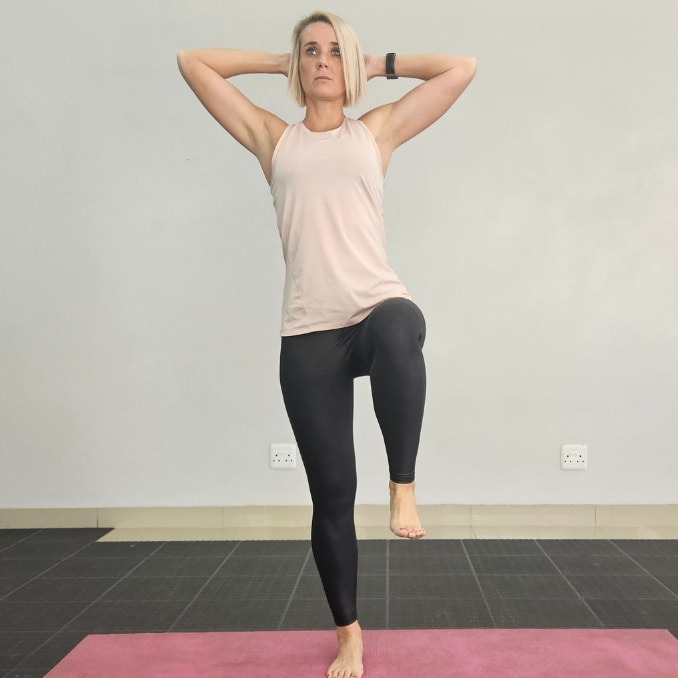 |
5. Lateral Leg Lifts
Begin in an upright standing position with your feet hip-width apart, maintaining good alignment with your head, shoulders, hips, and legs. Place your hands on your hips. Engage your core and lift one leg out to the side, ideally to a 30 to 45-degree angle. Keep your toes pointing forward. Lower your leg to return to the starting position and repeat the movement. After several repetitions, repeat the movement on the opposite side. Start with 3 sets of 10 repetitions on each side.
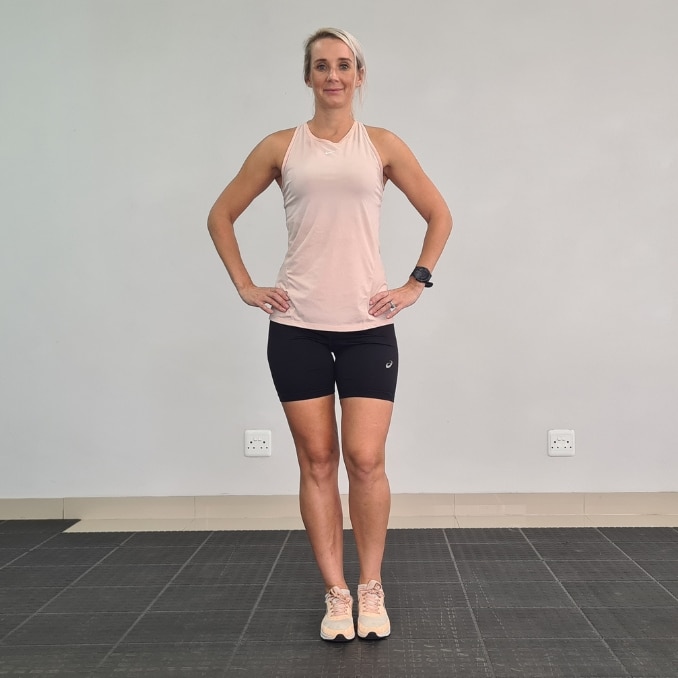 |
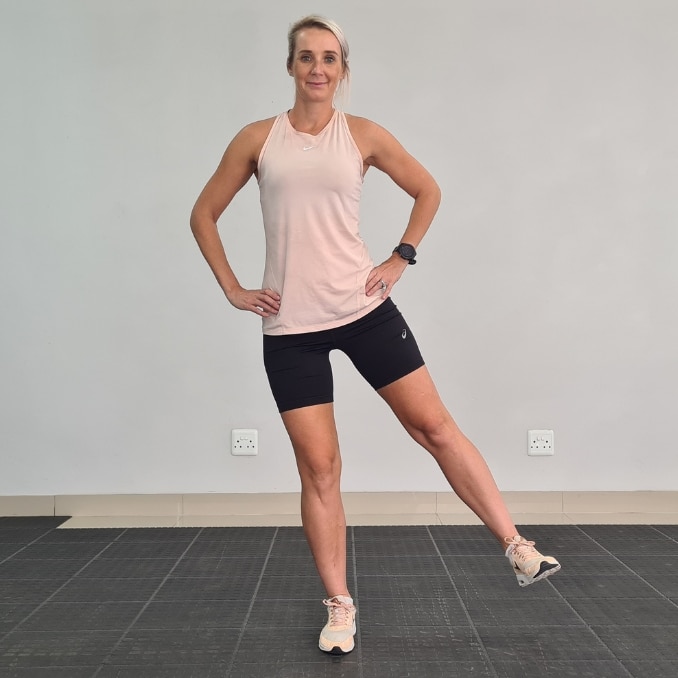 |
6. Squat
Begin in an upright standing position with your feet hip-width apart, maintaining good alignment with your head, shoulders, hips, and legs. Place your hands on your hips and engage your core. Hinge through your hips to move into a squat position, keeping your knees bent behind your toes. Raise back up to an upright standing position, squeezing your glutes at the top position. Repeat the movement for 10 repetitions.
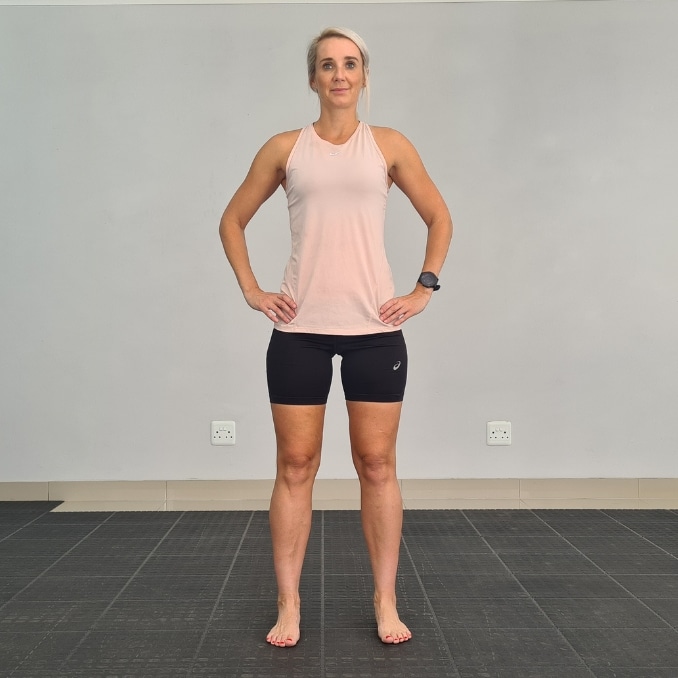 |
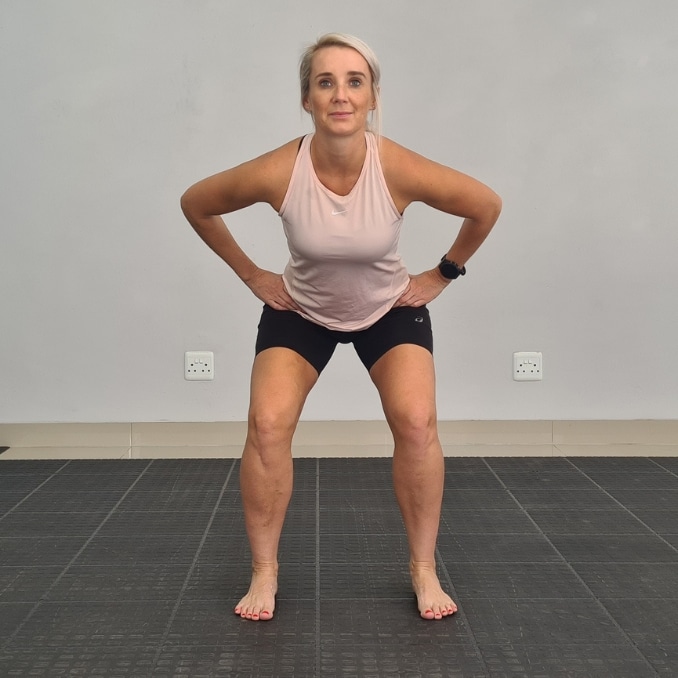 |
Routine
1. Chair Squat
For this quick body weight workout, begin in an upright standing position with your feet hip-width apart, maintaining good alignment with your head, shoulders, hips, and legs. Press your palms together in a prayer position at chest height. Engage your core, then bend through your hips and knees to move into a squat position, lightly touching your seat on the chair. Return to the starting position and repeat the movement.
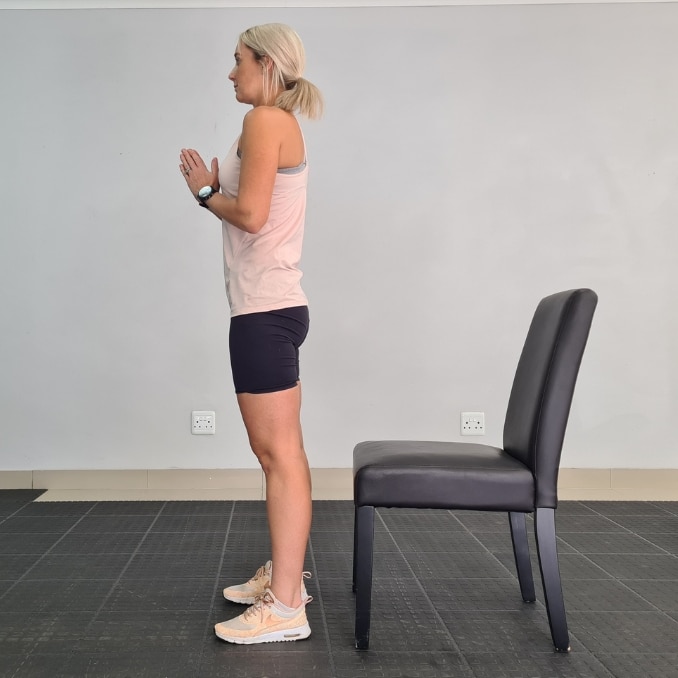 |
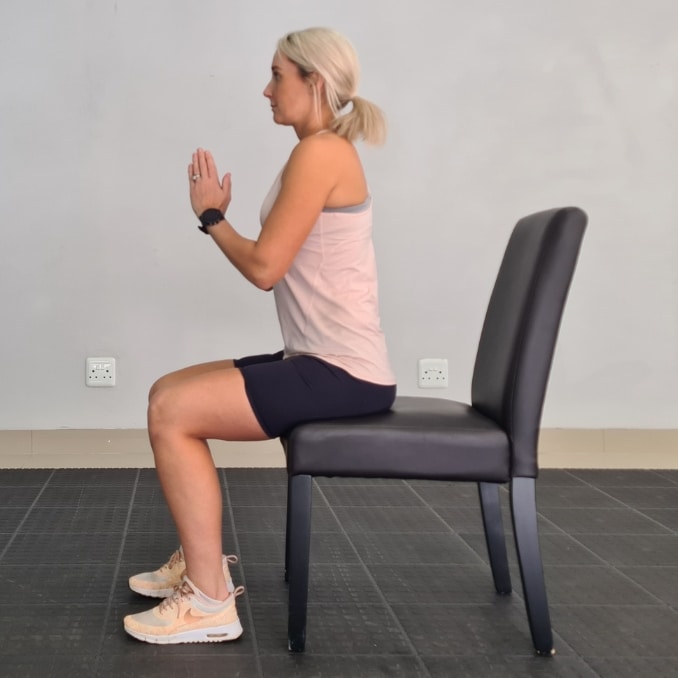 |
2. Marching in Place
Begin in an upright standing position with your feet shoulder-width apart, maintaining good alignment with your head, shoulders, hips, and legs. Place your hands at your sides and engage your core. Lift one knee up towards your chest, ideally to hip height, as you counter the movement with your opposite arm. Return to the starting position and repeat the movement on the opposite side. Complete with 3 sets of 10 repetitions.
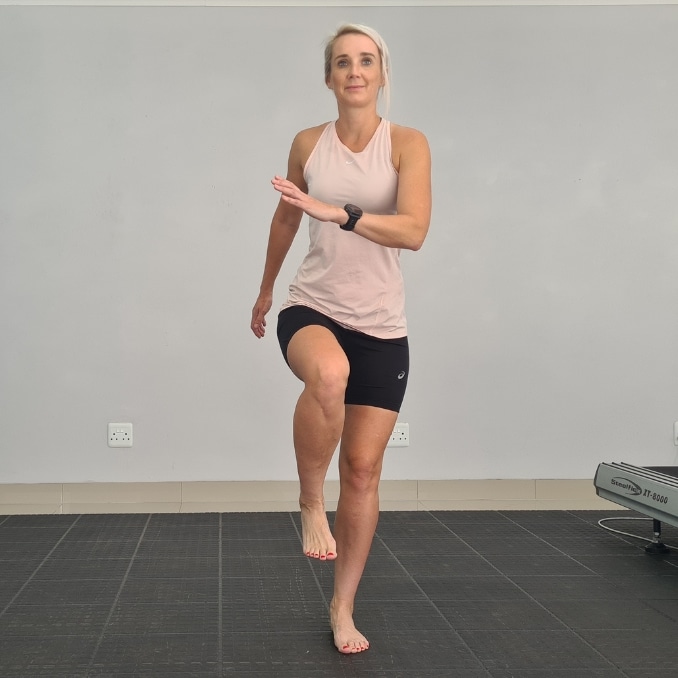 |
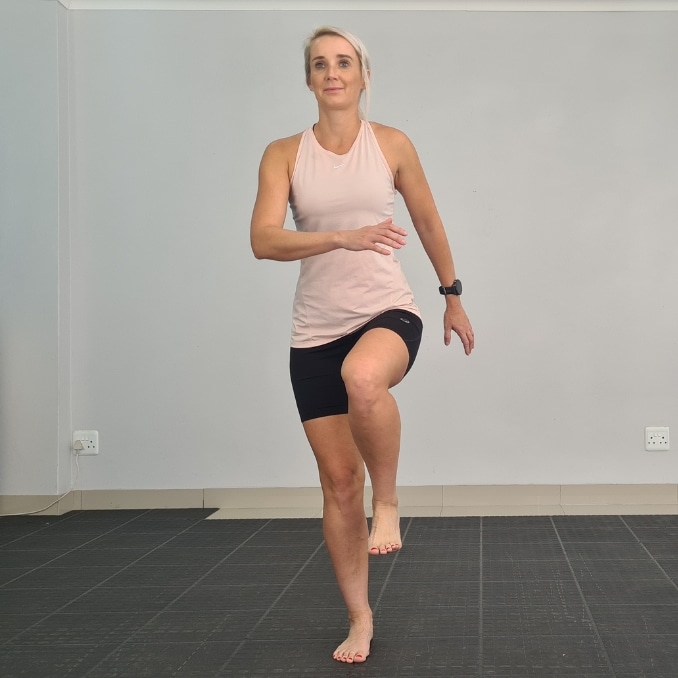 |
3. Single Leg Deadlift
For this quick bodyweight workout, you can either perform the movement as bodyweight or you can utilize the wall, the back of the chair, or anything stable for balance if needed.
Begin in an upright standing position with your feet shoulder-width apart, maintaining good alignment with your head, shoulders, hips, and legs. Place your hands at your sides. Engage your core and transfer all of your weight onto your foot. Slightly bend your supporting knee and hinge your hips, bending forward until your upper body is parallel to the floor while extending your opposite leg back. Return to the starting position and then repeat the movement on the opposite side.
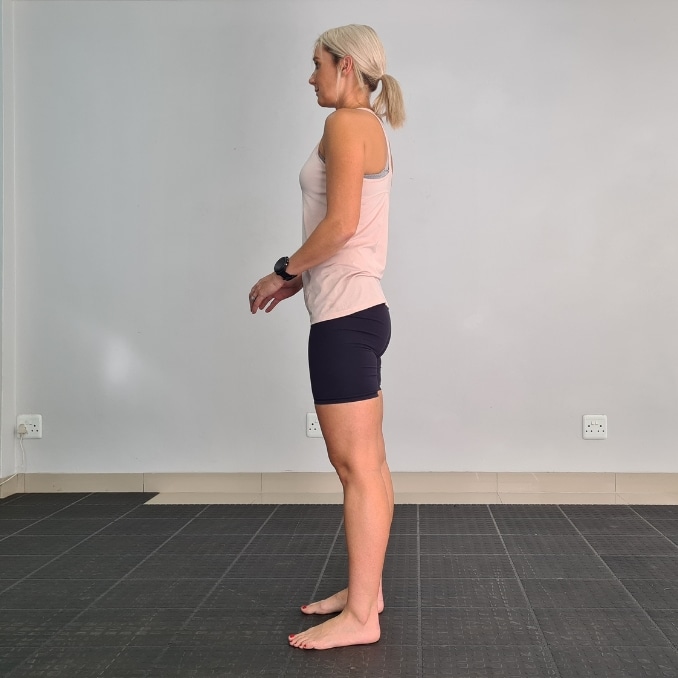 |
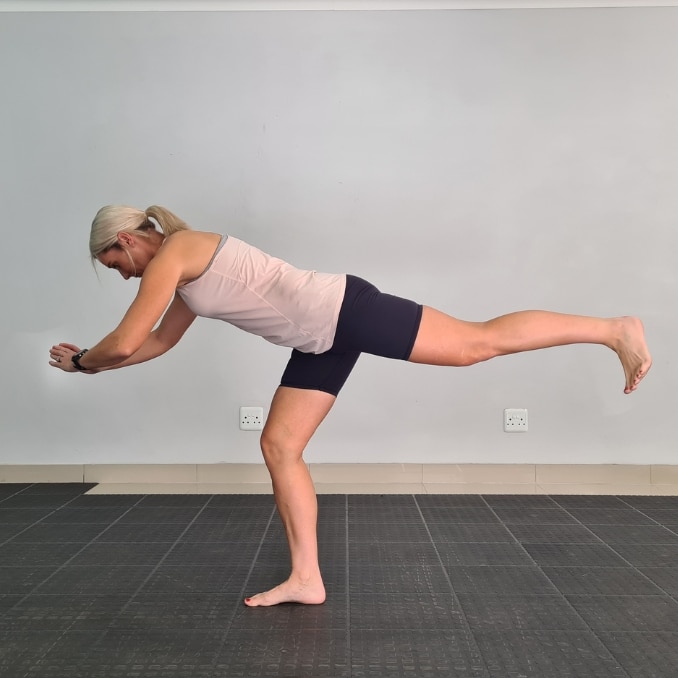 |
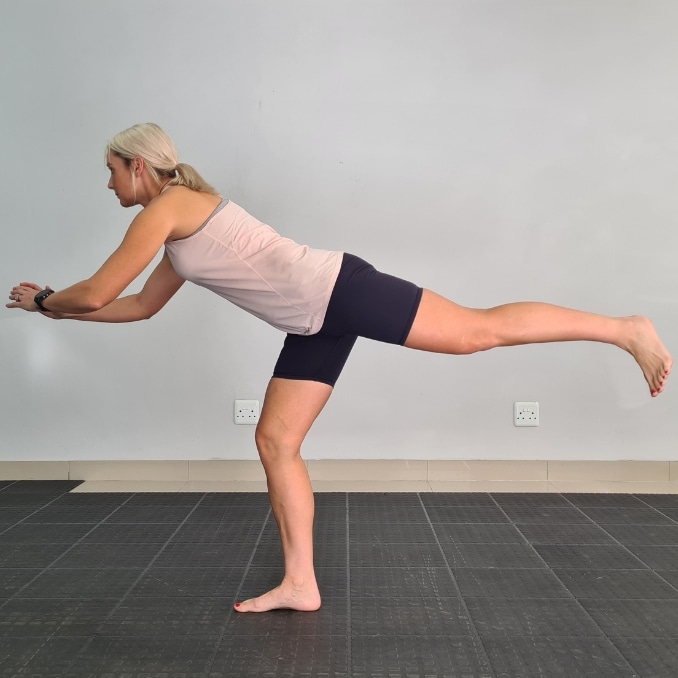 |
4. Side Step
Begin in an upright standing position with your feet shoulder-width apart, maintaining good alignment with your head, shoulders, hips, and legs. Engage your core and take a big step out to the side with your one foot. Return to the starting position and then repeat the movement on the opposite leg. Start with 3 sets of 10 repetitions on each side.
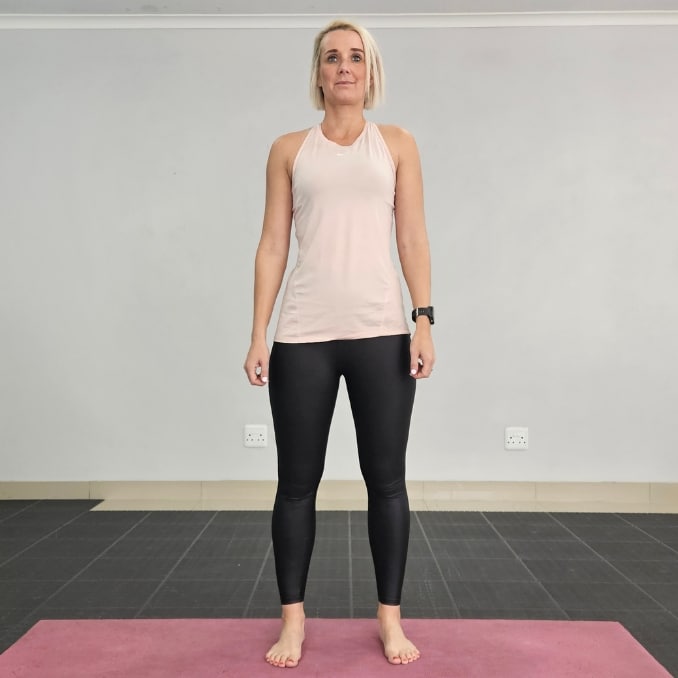 |
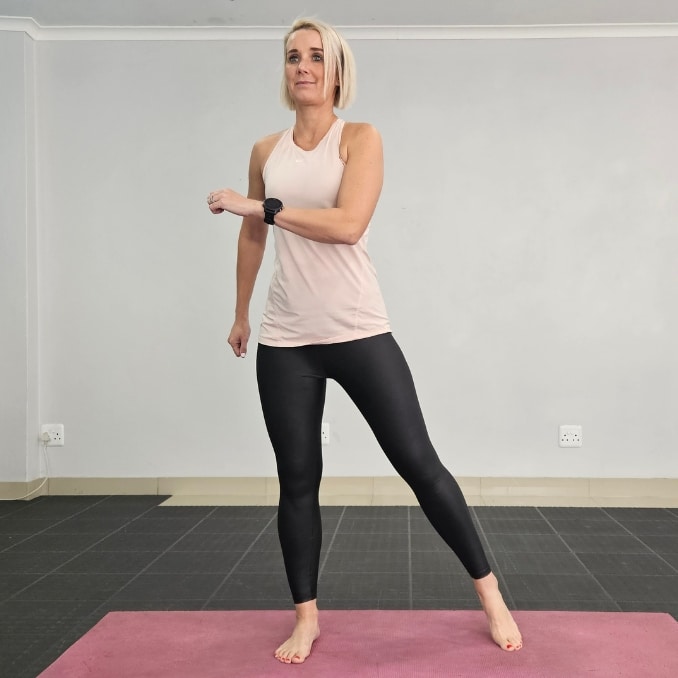 |
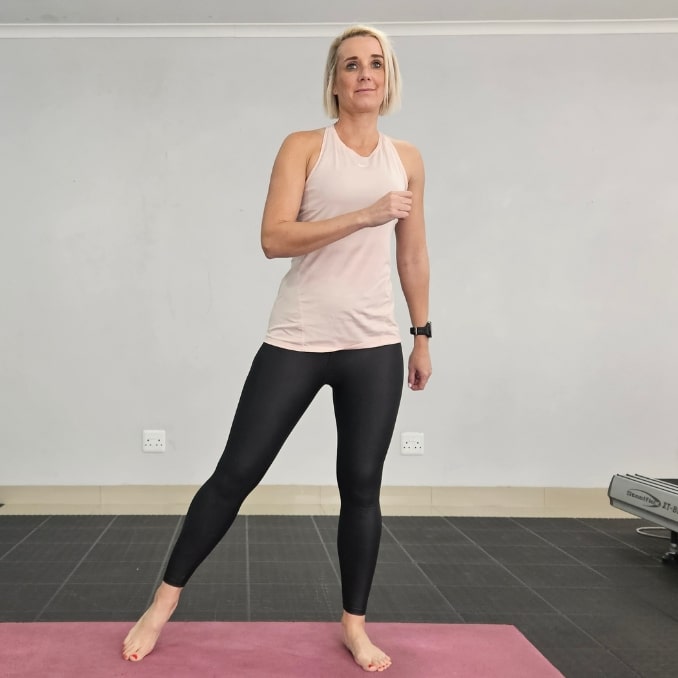 |
Feel free to mix and match these routines to keep your workouts interesting and challenging. Remember to modify each exercise's intensity or range of motion to suit your fitness level.
The Importance of Proper Form and Technique
While bodyweight workouts offer numerous benefits, prioritizing correct form and technique is important to prevent injuries and optimize results. Here are some tips to help you maintain proper form during your quick bodyweight workout:
- Alignment – Keep your body in proper alignment throughout each exercise. For example, when performing squats, ensure that your knees are aligned straight line up with your toes, and your back is straight.
- Core engagement – Activate your core muscles by pulling your navel towards your spine. This action is beneficial for maintaining body stability and safeguarding your lower back while performing exercises such as planks and push-ups.
- Breathing – Remember to breathe throughout each exercise. As you perform the movement, breathe in during the less difficult phase and exhale during the tougher phase. This correct breathing technique aids in oxygenating your muscles and enhancing your performance.

- Range of motion – To gain the most benefits, complete each exercise by moving through its entire range of motion. Should you feel any discomfort or pain, adjust the range of motion or make necessary modifications to the exercise.
- Gradual progression – As you become more comfortable with bodyweight exercises, gradually increase the difficulty level by adding more repetitions, increasing the duration, or trying more advanced variations. This will ensure continued progress and prevent plateaus.
Tips for Maximizing Your Quick Bodyweight Workout
To get the most out of your bodyweight workouts, consider incorporating these tips into your routine:
- Circuit training – Create a circuit incorporating various exercises to boost calorie burn and raise your heart rate. Complete each exercise for a designated time or number of reps before proceeding to the next, and repeat the circuit for several rounds.
- Interval training – Mix periods of high intensity with recovery to enhance cardiovascular fitness, build muscle, and increase calorie burn. One approach is to do a 30-second set of burpees at full throttle, then take a 30-second break or engage in low-intensity exercise.
- Incorporate plyometrics – Plyometric exercises like squat jump and burpees involve explosive movements that can increase power and burn more calories. However, ensure you have a solid foundation of strength and proper form before attempting plyometrics to reduce the risk of injury.
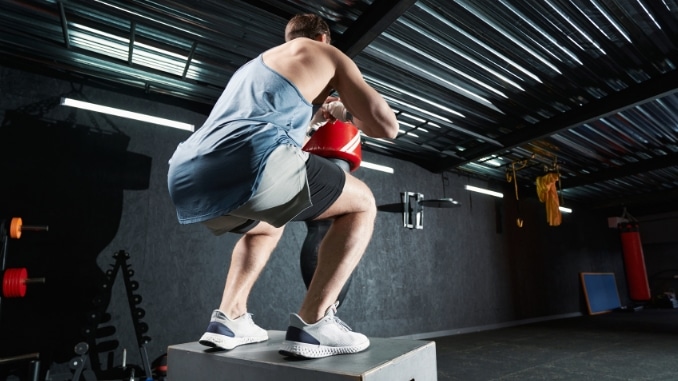
- Use a timer – Use a timer or a fitness app to track your workout duration and rest periods. Doing so will help you stay on track and maintain a consistent workout intensity.
- Mix up your routine – Keep your body and mind engaged by regularly changing your workout routine. Try different exercises, vary the order, or increase the intensity to prevent boredom and challenge your muscles in new ways.
- Incorporate strength and cardio – To get a well-rounded workout, combine bodyweight strength exercises with cardiovascular exercises. This will help you burn calories, lose weight, build strength, and improve overall fitness.
- Stay hydrated – Ensure you keep yourself hydrated to maintain peak performance by drinking ample water before, during, and after your workouts. Dehydration can lead to fatigue and decreased exercise performance.
- Rest and recover – Give your entire body time to rest and recover between workouts. This enables your muscles to undergo repair and become stronger. Aim for at least one to two days of rest per week.
Incorporating Bodyweight Workouts Into Your Routine
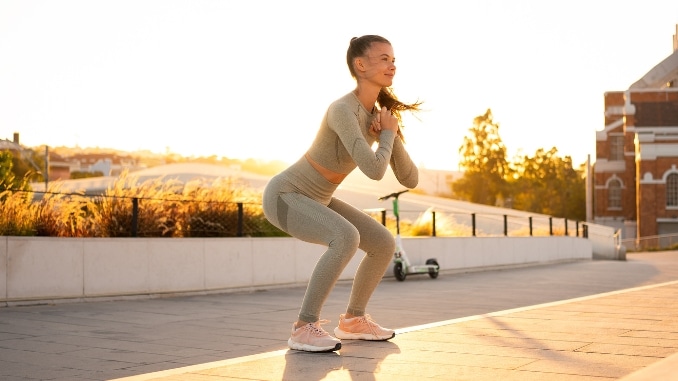
To make bodyweight workouts a sustainable part of your fitness routine, consider the following strategies:
- Schedule your workouts: Allocate specific time in your daily or weekly agenda for your bodyweight workouts. Treating them as non-negotiable appointments will help ensure consistency.
- Set and track progress: Establish specific fitness goals and track your progress over time. This could include increasing the number of repetitions, improving form, or reducing rest periods. Regularly reassess your goals and adjust your workouts accordingly.
- Find an accountability partner: Working out with a friend or joining a fitness community can provide motivation and support. Sharing your progress with someone and having them hold you accountable can boost your commitment to your workout schedule.
- Make it enjoyable: Choose the best bodyweight exercises and routines that you enjoy and that align with your fitness goals. If you find bodyweight workouts fun and engaging, stick with them in the long run.
- Mix it up: Add a variety of bodyweight exercises and routines to your workout to keep things interesting and target different muscle groups for a well-rounded challenge. This will also help you avoid hitting a plateau in your fitness progress.
- Listen to your body: Pay attention to your body's signals and adjust your workouts accordingly. If you're experiencing fatigue or muscle soreness, consider taking a day off to rest or opting for a less intense workout. Pushing through excessive fatigue or pain can lead to overtraining and an increased risk of injury.
- Seek professional guidance: If you need help with proper form or how to structure your workouts, consider seeking advice from a qualified fitness professional. They can provide personalized recommendations and ensure you perform exercises safely and effectively.
Remember, consistency is key when seeing results with bodyweight workouts. Stick to your routine, stay motivated, and celebrate your progress.
Tracking Progress and Setting Goals
Tracking your progress is an essential part of any fitness journey. It helps you stay motivated, assess your improvements, and set new goals. Here are some tips on how to track your progress and set goals with your bodyweight workouts.
1. Keep a workout journal
Start by keeping a workout journal to record your exercises, sets, reps, and any modifications or variations you make. This will help you track your progress over time and identify areas for improvement. You can also note how each workout felt and any challenges you faced.
2. Take measurements and photos
In addition to tracking your workouts, take measurements of your body to assess changes in muscle tone and fat loss. Measure your waist, hips, arms, and thighs regularly and compare the results. Taking progress photos from different angles can also be a great way to see your transformation visually.
3. Set SMART goals

Make sure that when you establish your goals, they are SMART: Specific, Measurable, Achievable, Relevant, and Time-bound. Instead of simply expressing a desire to become stronger, establish a specific goal to strive for, such as aiming to complete 20 push-ups within one minute within the next three months. This approach provides a clear target to focus on and work towards
4. Celebrate milestones
Celebrate your achievements along the way. Set smaller milestones that lead up to your larger goals, and reward yourself when you reach them. Indulge a soothing massage in a fresh workout ensemble, or take a day off to unwind and rejuvenate. Marking milestones helps maintain your motivation and enthusiasm as you track your progress.
5. Mix up your workouts
Mix up your routines regularly to prevent boredom and keep your workouts challenging. Try new exercises, variations, or even different workout formats like circuit training or AMRAP (as many rounds as possible). This not only keeps things exciting but also helps you continue making progress.
6. Listen to your body and adjust
Pay attention to how your body responds to different exercises and adjust your workouts accordingly. If an exercise causes pain or discomfort, find an alternative that targets the same muscle group. Similarly, increase the difficulty by adding resistance or trying a more advanced variation if an activity becomes too easy.
7. Find a workout buddy or join a community
Working out with a partner or joining a fitness community can provide support, motivation, and accountability. Find a workout buddy with similar goals and schedule regular workout sessions together. If in-person options are limited, consider joining an online fitness community to connect with like-minded individuals.
8. Periodize your training
To avoid plateaus and keep making progress, consider periodizing your training. This involves dividing your workouts into different phases, each with a specific focus. For example, you can have serious strength training, endurance, and recovery phases. Periodization helps optimize your training and prevents overtraining.
9. Listen to your body and take rest days
Rest and recovery are just as important as the workouts themselves. Listen to your body and take rest days when needed.
This allows your muscles to repair, build muscle mass, and grow stronger. Overtraining can lead to fatigue, decreased performance, and an increased risk of injuries, so make rest a priority for optimal muscle growth and maintenance of muscle mass.
10. Stay consistent
Maintaining a consistent approach is crucial for reaching your fitness objectives. Stick to your workout schedule, even when you don't like it. Remember that progress takes time and effort. Stay consistent, and you will see results.
Conclusion: Making Bodyweight Workouts a Part of your Fitness Journey
Congratulations on taking the first step towards a fit and fabulous you with these quick and easy bodyweight workout routines! Incorporating these workouts into your fitness routine allows you to achieve your goals without expensive gym memberships or equipment.
Remember to start with the basics, set clear goals, and track your progress. Keep yourself motivated, push your limits, and enjoy your workouts. With consistency and dedication, you'll unlock your fitness potential and experience the benefits of effortless fitness.
What are you waiting for? Lace-up those sneakers, clear some space, and get ready to sweat it out with these quick bodyweight workout routines. So, check out this Bodyweight Workouts 101! Your journey to a stronger, healthier you starts now!

